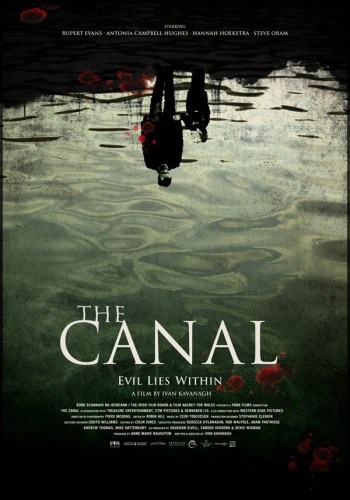IVAN KAVANAGH'S HORROR FILM MOSTLY WELL-RECEIVED AT TRIBECA FEST
 The Canal, a psychological horror film written and directed by Ivan Kavanagh, was mostly well-received when it premiered at the Tribeca Film Festival last month (check out reviews at Fangoria, PopMatters, and the less enthusiastic This Is Infamous). The Canal is about a film archivist, and Kavanagh explains to Complex's Matt Barone that since the character's job is watching films, it makes perfect sense that his hallucinations and/or fantasies should be colored by those films. "For me," Kavanagh tells Barone, "it was the perfect opportunity to reference the films I love, to make a film that at moments seems like a Dario Argento film and at other moments like a different directors' films. It seemed right for the character. The film is about cinema, in a way. I don't usually do that referential thing in my films, but it just fit here. And a lot of them are unconscious. If you love the genre and love certain films in it, you can't help but be influenced by them. Another one we looked at a lot for this film was Nicolas Roeg's Don't Look Now, specifically for that film's look. We use a lot of zooms and lenses that are directly influenced by Don't Look Now. We put a lot of thought into everything. The best horror films, for me, are always divisive. Like with Argento, I don't love all of his stuff but I do love Suspiria. Films like that are so divisive—people either love them or violently hate them. That's the perfect type of film."
The Canal, a psychological horror film written and directed by Ivan Kavanagh, was mostly well-received when it premiered at the Tribeca Film Festival last month (check out reviews at Fangoria, PopMatters, and the less enthusiastic This Is Infamous). The Canal is about a film archivist, and Kavanagh explains to Complex's Matt Barone that since the character's job is watching films, it makes perfect sense that his hallucinations and/or fantasies should be colored by those films. "For me," Kavanagh tells Barone, "it was the perfect opportunity to reference the films I love, to make a film that at moments seems like a Dario Argento film and at other moments like a different directors' films. It seemed right for the character. The film is about cinema, in a way. I don't usually do that referential thing in my films, but it just fit here. And a lot of them are unconscious. If you love the genre and love certain films in it, you can't help but be influenced by them. Another one we looked at a lot for this film was Nicolas Roeg's Don't Look Now, specifically for that film's look. We use a lot of zooms and lenses that are directly influenced by Don't Look Now. We put a lot of thought into everything. The best horror films, for me, are always divisive. Like with Argento, I don't love all of his stuff but I do love Suspiria. Films like that are so divisive—people either love them or violently hate them. That's the perfect type of film."Elsewhere in the interview, Kavanagh discusses Brian De Palma: "Another filmmaker I really love, as well, and whom I've become an apologist of over the years is Brian De Palma. He's a bit like Dario Argento in how he uses color beautifully, especially in his early films. Argento and De Palma both have this thing where their color schemes can almost seem too over-the-top at times but it adds so much to the atmosphere of their films. Maybe we don't quite reach that level in The Canal, but I understand what they're after—it's not reality, it's something else. It's inside the protagonist's mind."
Kavanagh discusses more of his inspirations with the Hollywood Reporter's Matt Patches.



